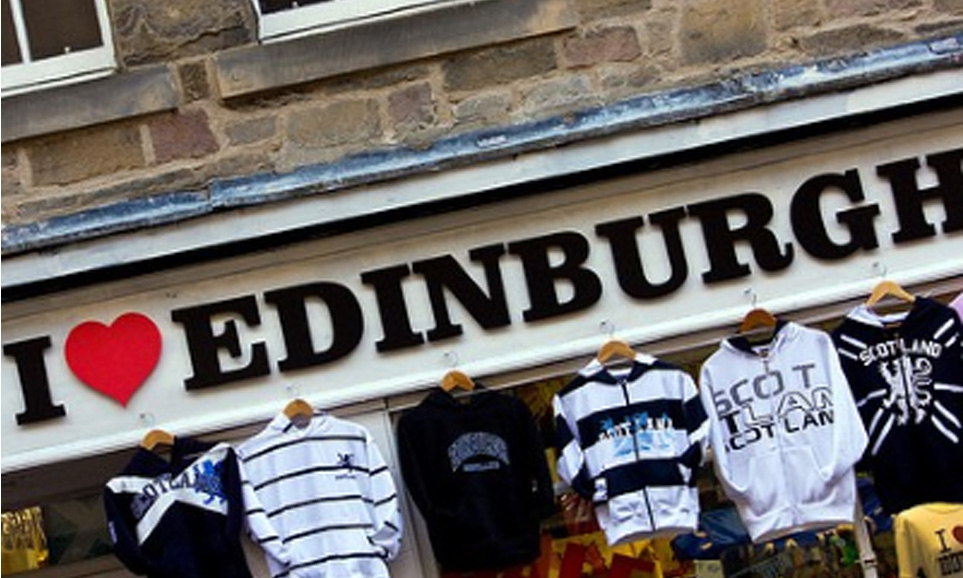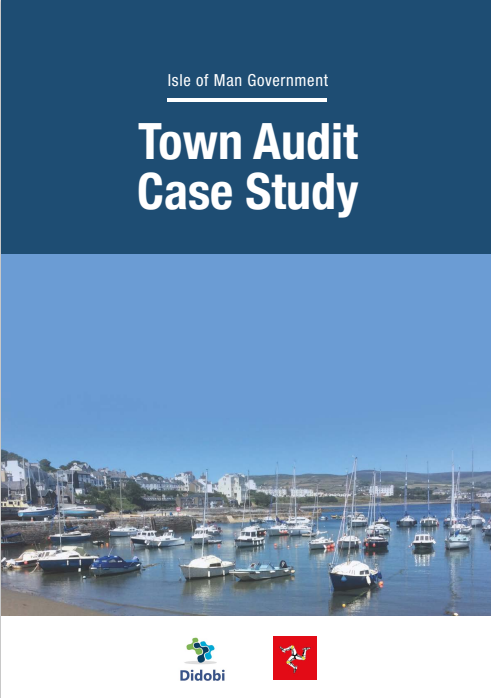
Does opportunity knock for all of Scotland’s towns and cities?
40% of empty shops in Scotland’s towns have remained vacant for more than three years! This week we published our second report on Scotland’s towns and cities in partnership with The Institute for Retail Studies, The University of Stirling. The report’s key findings were presented at the offices of KPMG in Edinburgh by Professor Leigh Sparks of The University of Stirling.
Following the presentation we were fortunate to have an excellent panel of experts chaired by Jane Bradley (The Scotsman) with Malcolm Fraser (Chair of the Scottish Government’s National Review of Town Centres), John Lee (Scottish Grocers Federation) and Paul McLennan (East Lothian Councillor) who kindly stepped in for Chic Brodie MSP who had to attend a three line whip vote in the Scottish Parliament. Before leaving Chic set out his thoughts and that of the Scottish Government on the importance of town centres and the town centre first policy. This is a hot topic in Scotland in light of an out of town centre (Braehead) being awarded town centre status when it is not a town as you and I know a town to be. I will say no more as it is fiercely political and that is not what LDC partakes in!
The research set out to answer four questions:
1.What is the retail scale and make-up of Scottish towns and cities?
2.How variable are Scottish towns and cities in their retailing?
3.How significant is retail vacancy and how has it changed in the last year?
4.Can we explain some of the patterns and changes found?
In retail terms, Scotland has many similarities with much of the UK outside London. LDC figures show that Scotland is slightly more multiple (chain retailer) oriented than GB as a whole (35% v 34% of shops); this is a narrower difference than in 2013 when the equivalent values were 35% (Scotland) and 33% (GB). There is little difference in terms of comparison or convenience proportions between the years (29% and 14% in Scotland versus 30% and 13% in GB). There is, however, a difference in vacancy rates with Scotland reporting 13.7% retail vacancy in 2014 against 13.3 % for GB. The gap has narrowed markedly since 2013, which showed vacancy rates of 14.5% in Scotland and 13.6% in GB. However it is widely known that there are large variations amongst the English regions with the strength of the South-East and London outweighing more difficult situations elsewhere. This suggests Scotland is performing quite well.
The Key findings were;
- Scotland’s average retail vacancy rate has fallen from 14.5% to 13.7%
- East Kilbride has the highest vacancy rate of all Scottish towns at 33%.
- Inverurie continues to have the lowest vacancy rate at 1%.
- Town vacancy rates (-1.8%) have improved at twice the rate of the cities (-0.9%)
- 5 towns have maintained vacancy rates at less than 6% for the last three years – Inverurie, Ellon, North Berwick, Dunbar and Biggar.
- 5 town’s vacancy rates have remained above 22% over the last three years – Banff, Dumbarton, Cumbernauld, East Kilbride and Ardrossan.
- Banff (+8%) and Huntly (+14%) have seen the largest increases in vacancy rates during the 2012/13 period but have since stabilised
- The most consistent positive performers of improved vacancy rates have been Anstruther, Clydebank, Dumfries, Inverkeithing, Lochgelly, Peterhead and
- 5% of vacant property has been vacant for more than three years.
- Dundee has the highest proportion of persistent vacancy at 11%.
- 4% of all retail premises have on average been vacant for more than three years
- 3 cities (43%) and 52 towns (55%) have vacancy rates below the national average.
- Independent retailing is critical to Scotland’s towns with 56% of the total units. Anstruther has the highest proportion of independent shops at 86%
- Gretna has the lowest proportion of independent shops at 5%
- Leisure is an increasingly significant presence in cities and towns with Edinburgh and Glasgow having 39% each (of total stock) and Renfrew, St Andrews, Lochgelly and Fort William having over 30%.
- Aberdeen is the city with the highest proportion of charity shops at 4.2%. Penicuik is the town with the greatest proportion of charity shops at 8.9%.
- 67% of towns have no recorded off licence (excludes supermarkets and convenience stores), 59% of towns have no cheque cashing outlet and only 6% of towns have no betting shop.
- Booze Money and Gambling Index. Aberdeen and Glasgow have the highest index score for the cities at 2.62 each and Bellshill has the highest index score for a town at 7.69.
The panel discussion was very interesting as a key point that everyone agreed on is do not focus on the shop but LOOK UP and see how much residential opportunity exists above the empty shops that could create an instant audience for the shop below! With an ageing population and urbanisation happening then this is a very good point BUT as Scott Marriott of KPMG told me afterwards it could be a barrier to redevelopment of towns if these residential dwellings were on a leasehold or freehold which would prevent any likely cost effective redevelopment of these streets. The answer would be to concentrate ownership of these shops in the hands of a few landlords but that presents a number of political issues as well!
Malcolm Fraser made a very interesting point with regards to the value and contribution of new retail developments and he cited that, in his view, Union Square, the large shopping centre owned by Hammerson in Aberdeen is a monstrosity that has served no real purpose apart form privatise an important part of the public realm and move the bus station to a place no one can get to. This led onto discussion around the impact of these big schemes and the fact that local authorities falsely think of the employment benefit and not the impact which as we know only too well at LDC is often significant. You only have to look at the vacancy rates around these big schemes in the cities and towns that they reside to see the impact. And of course the independents who rarely occupy the new schemes lose their anchor stores resulting in a large increase of closures. This can be prevented with proper impact analysis which is part of the overall strategy that ensures everyone wins – occupiers and consumers. The landlords on the fringe then must consider redevelopment as the stark figure of 40% of all the vacant units in the top 100 towns and cities have been vacant for more than three years!
The report is 65 pages long and looks at a wide number of factors but the one I will leave you with is that the Stirling team found no significant correlation between poor towns and vacancy rates. This is good news as it means with the right leadership, a proper plan, a temporal and independent evidence base then you can stay alive and thrive as a town. Opportunity does indeed knock for all!
Click here for further detail on the full report or summary report.
Click here to read the ‘Pretty Vacant’ article published by Leigh Sparks where he discusses the development of a consistent and increasingly comprehensive coverage of the retail make-up across Scotland’s towns and cities.
Images from the event can also be seen on the LDC Flickr account
Photo credit: #96






Leave a comment: